Classification of the Kingdom “Animalia”
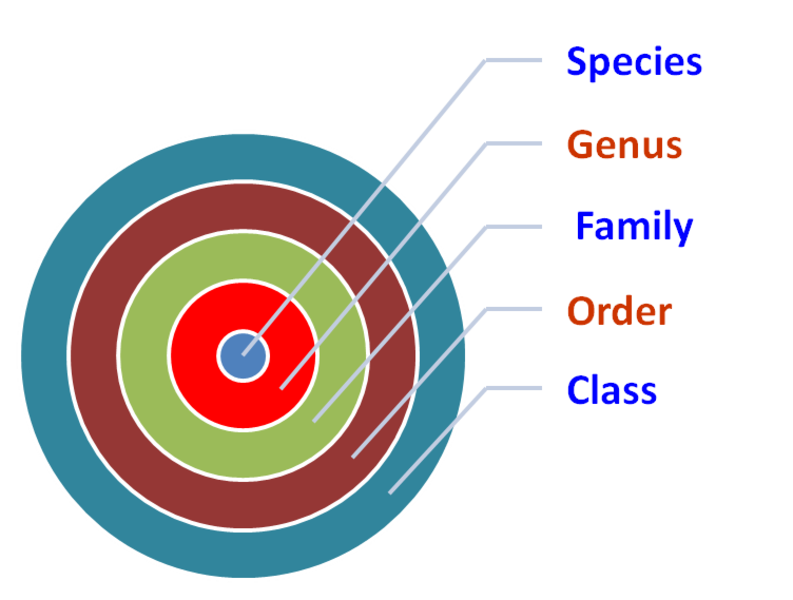
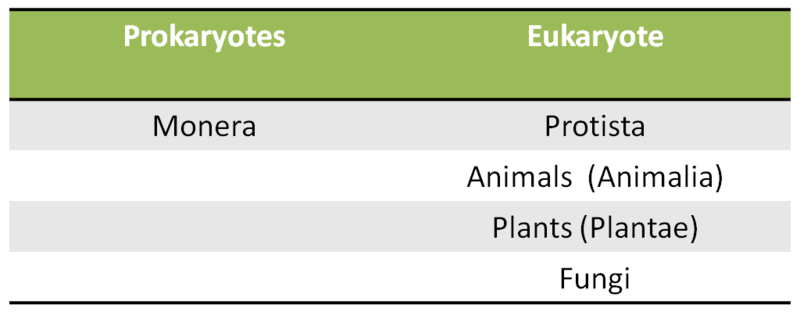
What is an arthropod;
- They have bilateral symmetry
- Their body consists of series of repetitive segments and joint limbs
- Their body is protected by an exoskeleton (chitinous shell)

Arachnids:
- Chelicerates (Chelicerata)
- Pedipalps
- 4 pairs of legs
- Cephalothorax – Abdomen
Insects:
- Functional Mandibles
- 3 pairs of legs
- Head – Thorax - Abdomen
General Information on Insects
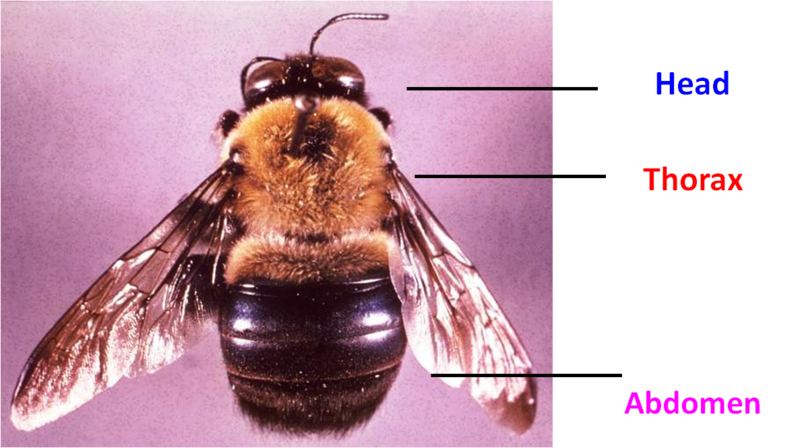
The chitinous shell of insects consists of three parts:
- Dermis - cuticle (cuticula): dead layer
- Epidermis: living monolayer of epithelium cells
- Basement Membrane: a thin layer ‘’stuck onto’’ the epidermis
Mouthparts: Defines the way it affects a certain habitat. Information on their biology, damages and control
- Chewing Insects
- Sucking Insects
Metamorphosis: an insect’s unique attribute
- Ametabolous: Insects that develop without any changes in form – lack of metamorphosis
- Hemimetabolous Insects: Insects that undergo an incomplete metamorphosis
- Holometabolous Insects: Insects that undergo a complete metamorphosis
General information on rodents

Kigdom: Animalia
Phylum: Chordata
Class: Mammalia
Order : Rodentia
Food Habits:
- Herbivores,
- Omnivores,
- Predators (only a few species)
Heightened sense of hearing, smell and touch.
Many generations each year
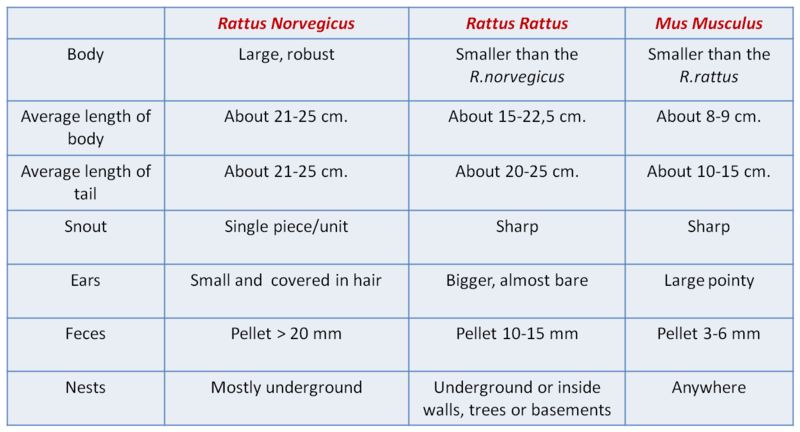
General Information on other pests
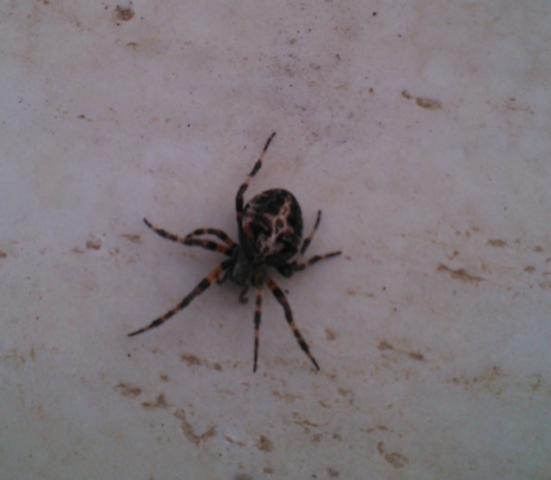
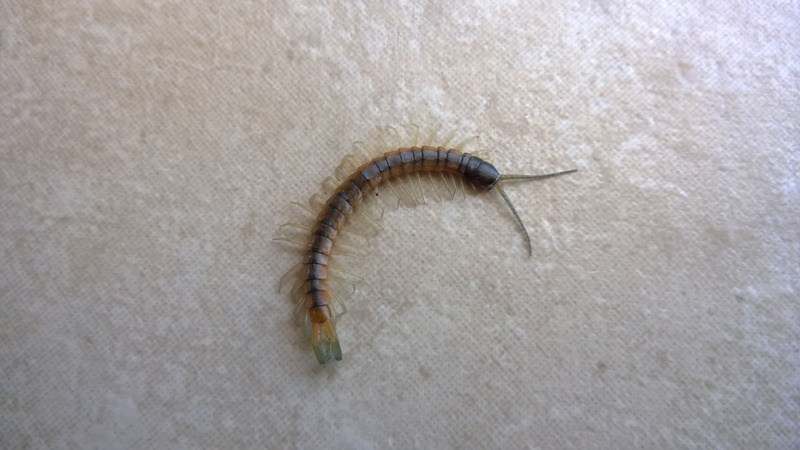
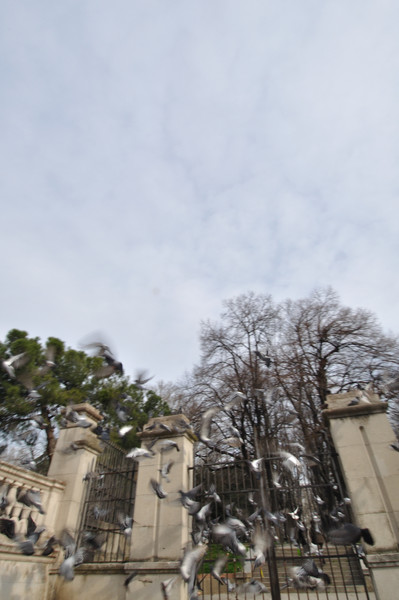
Spiders
- Prosoma - Opisthosoma
- 40.000 species
- Most species are harmless to humans
- Latrodectus tredecimguttatus a european species with serious toxic symptoms
Acari
- They are a taxon of arachnids.
- Common characteristics with insects: exoskeleton structure
- Differences: chefalothorax and 4 pairs of legs instead of 3 pairs like insects.
- Many mite species affect plants, stored products, animal and humans.
- Acari undergo four subsequent stages of development: egg, prelarval stage, larva stage (nymph – has three pairs of legs) and adult.
Myriapods
- Size: 0,25mm up to30cm
- They live mostly in terrestrial environments while some live in freshwater ecosystems.
- Herbivores, Detritivores, Predators, decomposers, parasites
- They hibernate in groups inside houses
- 20-300 eggs every year depending on humidity and temperature.
- Many myriapods produce noxious secretions (often benzoquinones) which can cause a temporary edema and a stinging sensation
Birds
- They carry the ectoparasite mite species Dermanyssus gallinae
- They can cause anemia when found in large numbers
Which are the categories of pests?
General Information: a) Biology - Significance, b) Differences between parasites of health importance and field parasites.
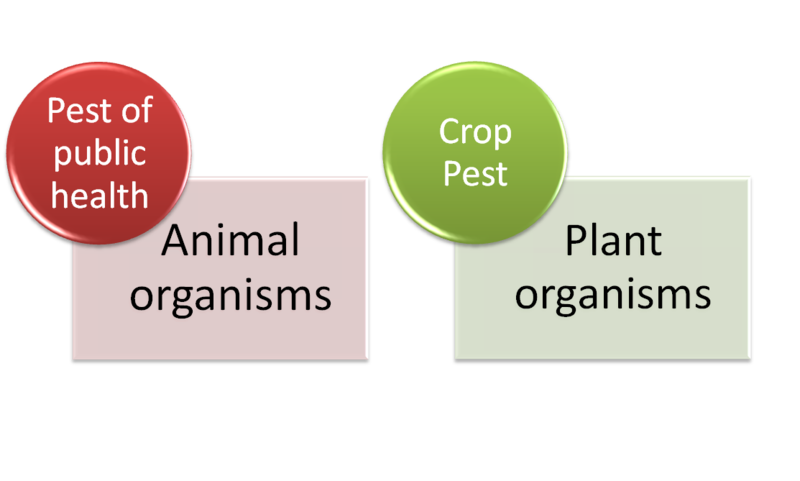
Pest Definition
- Every organism (bacteria, fungi, plant or animal) which has harmful effects on human health as well as the economy (food)
- In general, every organism that we do not want around us (that affects our comfort and aesthetics)
- The knowledge of the biological cycle of pests and their feeding habits can be very helpful in pest control activities.
Classification, major categories of insect and other pests of public health significance and pests of stored agricultural products
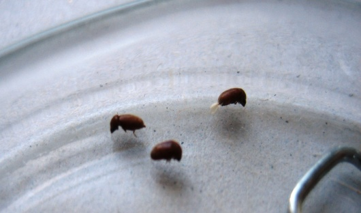
Stored – Product Insects
"Successful" Insects:
- They can walk or fly
- They move along the products through international trade (“traveler” insects)
- They use a number of shelters/hiding places and can survive for a number of years
- Shape: narrow, small, flattened
- In their hiding places, they can avoid immediate exposure to pesticides (tolerance) and natural enemies
Damages:
- Quantitative Damages
- Qualitative Damages
- "Psychological" Damages
- Economical damages through the rules of transfer and sale
Wood Infesting Insects
Wood infesting insects are basically insects that feed on wood.
- Species that infest trees in open spaces (forests, fields)
- Species which infest wood in residential areas
- Species which infest both of the above categories
The main purpose of wood infesting insects is to consume cellulose. They are equipped with the proper enzymes (hydrolytic enzymes) in their saliva and digestive system.
Why are stored product insects so “successful”?
What are the damages caused by stored product insects?
What do wood infesting insects consume?
Classification, major categories of insect and other pests of public health significance and pests of stored agricultural products (2)


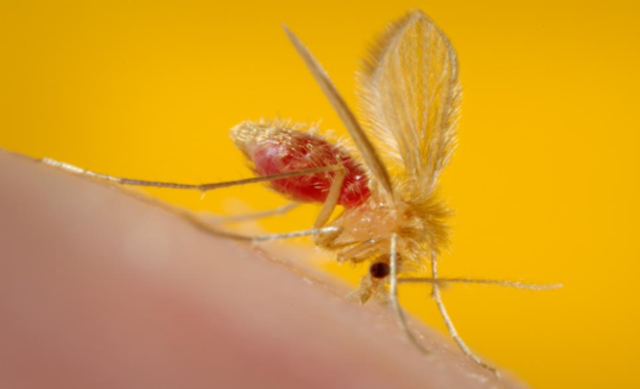
Diptera of Health Importance
- Blood sucking Diptera
- Myiasis
- Non blood – sucking Diptera
Mosquitoes (Culicidae)
- they are the most important blood – feeding arthropods
- they live among people
- > 2500 Species
- Presence of water source/supply is a necessity
Development Stages:
- eggs
- larva
- pupa
- adult
Subfamilies:
- Anophelinae (including the genus Anopheles which is responsible for the transmission of malaria),
- Culicinae (including the genera Aedes, Culex as well as the Culiceta, Psorophora and Mansonia),
- Toxorhynchitinae ncluding non blood-feeding species, the larvae of which are considered to be important because they are predators of mosquito larvae.
Aedes (Stegomyia) albopictus («tiger» mosquito)
Body and legs with black and white stripes.
Capable of transmitting, at least 22 illnesses to humans:
- 4 types of dengue fever,
- illnesses responsible for the inflammation of the brain
- Nematodes responsible for filiariases i.e. Dirofilaria immitis.
Flies (Diptera)
- Mouthparts sucking with proboscis :
- Oviposition: in humid environments and if possible on decomposing matter. 2000 eggs / fertilization
- Larva Incubation time: 8 hours - 3 days (depending on the temperature)
- A fly lives about 40 days
- Feeding habits: decomposing liquid plant materials and dirt
- Germ Carrier: countless strands of hair on their legs
Most important species:
- House fly(Musca domestica)
- Lesser house Fly(Fannia canicularis)
Phlebotominae (Psychodidae)
- Midges live mostly in warm climates.
- They lay their eggs and make their nests in dark and humid spaces, cracks in walls and inside animal feces.
- They usually infest rural and suburban areas.
- They transmit leishmaniasis, (kala-azar) one of the most common canine diseases in Greece caused by the protozoon species Leishmania infantum.
Diptera: Categories, examples and possible damages
Classification, major categories of insect and other pests of public health significance and pests of stored agricultural products (3)
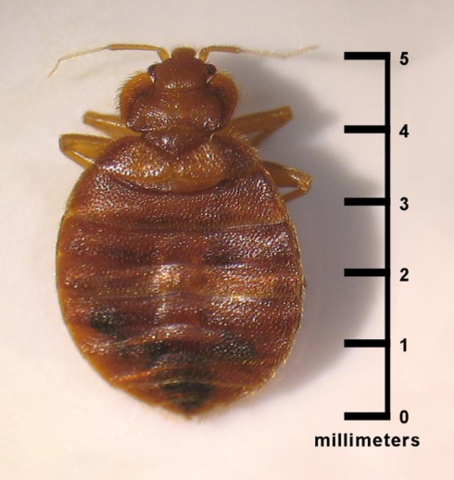
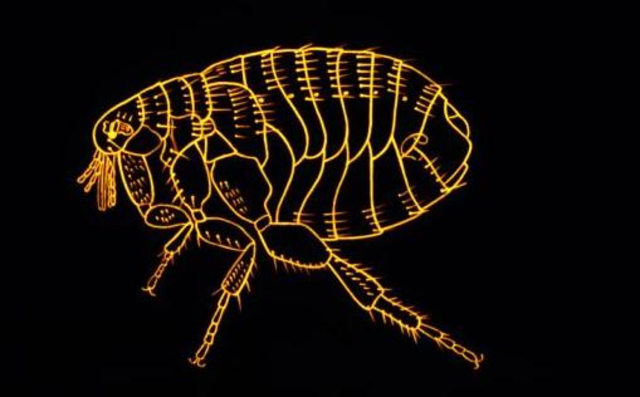
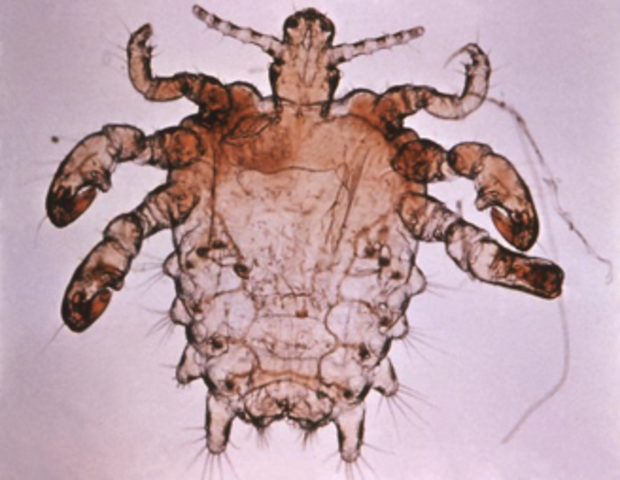
Bedbugs (Hemiptera: Cimicidae)
- Mostly the Cimex lectularius but there are other species (Cimex hemipterus etc)
- Hemimetabolous : egg- nymph- adult
- They only remain stuck onto humans long enough to feed.
- They remain idle during the day
- Shelters: dark and dry spaces such us mattresses and beds
- They can live without food up to 550 days
- Temperature (28-32 οC) and humidity (75-80%) are very important.
Fleas (Siphonaptera: Pulicidae)
- Multiple species, mostly on mammals and birds, especially the generaPulex and Xenopsylla.
- Holometabolous : egg – larva - pupa- adult
- Their life cycle can last up to 20 months
- They avoid light
- Shelters: animal fur or feathers, under human clothing or inside beds.
- They do not have an exclusive host
- They can last up to 6 months without any food.
- They can jump up to 20 cm.
Lice (Anoplura: Pediculidae)
- They insist on sucking blood – they feed on blood during all of the development stages.
- Wide geographical dispersion
- They have a very hard and durable body.
- Absence of natural enemies – They have many different hosts
- Longevity (up to 14 years)
- Extraordinary reproductive ability. They lay up to 18000 eggs. Parthenogenesis occurs in many species.
- Lice infestation = pediculosis
Most common lice species:
- Pediculus humanus corporis humans
- Pediculus humanus capitis head
- Phthirus pubis pube
Lice species
Classification, major categories of insect and other pests of public health significance and pests of stored agricultural products (4)
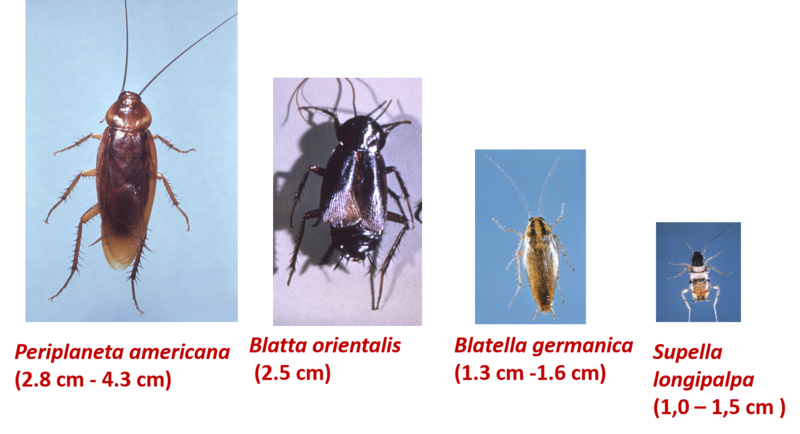
Cockroaches (Dictyoptera: Blattidae)
Cosmopolitan
- They have been found even in fossils. They have been alive for over 300 mil. years.
- They are omnivorous insects
- Only 10 species – from 3500 (6 families), can be considered as a public health hazard
- The ovary or ovary sack which holds the eggs in a protective membrane (receptacle) is very resistant to pesticides in relation to the adult insects
Species
- Blatta orientalis (oriental cockroach)
- Blatella germanica (German cockroach)
- Periplaneta americana (American cockroach) : Adults can fly
- Supella longipalpa (Brown-banded cockroach)
Cockroach Species
Classification, major categories of insect and other pests of public health significance and pests of stored agricultural products (5)


Non blood – eating Hymenoptera
Bees
- A precious insect: pollination, honey, wax (cosmetics), venom (arthritis medicine) pollen, propolis, royal jelly etc.
- Hairy and do not have a strong narrowing (petiole) before their underbelly.
- Does not sting easily, only when it is under threat
Wasps
- Few or no thickened hairs
- They also form colonies but much smaller.
- Unlike bees, wasps survive after stinging someone.
Differences between Bees and Wasps
Taxonomy – Basic Insect categories and other harmful organisms of health importance and stored products
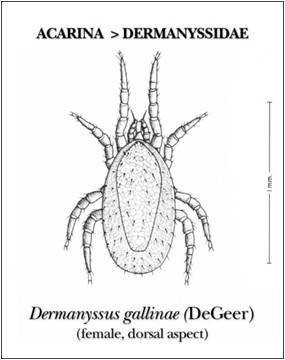
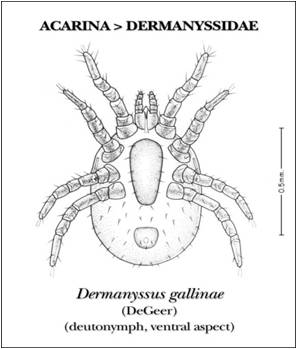
Blood – eating Achari
Three families (Dermanyssidae, Macronyssidae, Laelapidae)
- Mostly on Birds and rodents but can also be found on humans
Red poultry mite (Dermanyssus gallinae)
- On “domestic” and wild birds (and on humans)
- Their “bite” is painful and can cause irritation and dermatitis
- Found in poultry farms (severe infestation), bird nests, houses, hospitals etc.
House Dust Mites
- Very small in size (around 0,3 mm) – up to 1500 achari can be found on the tip of a single match.
- They feed during the night, on human epidermal flakes – fungi Aspergillus repens
- A house dust mite produces around 20 fecal particles every day. Life span= 42 days. This means that it can produce 840 fecal particles totally. ( a quantity 200 times larger than its own weight)
- A clean pillow contains dozens of thousands “ 0.3 mm domestic animals”. Furthermore, if a pillow has not been cleaned in years (usually we only wash the pillow cover), it can contain up to 400.000 mites.
Ticks (Acari), Argasidae – soft ticks, Ixodidae – hard ticks
- Gnathosoma (capitulum), chelicera, hypostoma, pedipalps.
- Hard ticks can be found hidden in foliage.
- larvae have 6 legs (they cling to vertebrate hosts and suck blood )
- Nymphs have 8 legs.
- They are parasites of mammals, birds and reptiles.
- Humans are a random host
Which are the harmful organisms included in the achari family?
Tick categories
Ζoonoses: Identification problems (description, epidemiology, symptoms, detection)
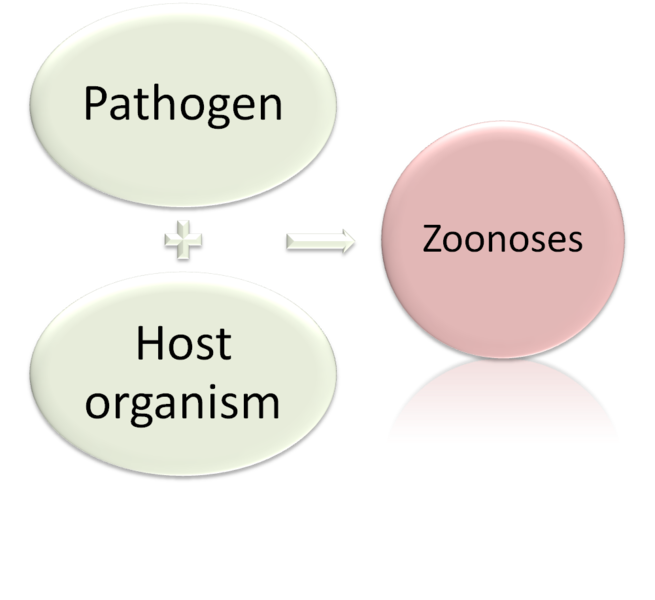
Mosquitos
- Nuisance
- Pathogen carriers(illnesses, epidemics, pandemics)
- Malaria, Dengue Fever, Filariasis etc.
Aedes albopictus or “Tiger” Asian mosquito:
- Potential carrier of many arboviruses (at least 22) and other pathogen to humans
- Most important illnesses that it can transmit are Dengue fever and the Chikungunya virus
Flies
- Carrier of many pathogen microorganisms.
- Cholera, anthrax and microbe dysentery pathogens, etc
- Infections like salmonelloseis
Gnats
- Carriers of leismaniasis which is attributed to the protozoan Leismania. (Kala-azar). Lack of treatment leads to death
- Bacteria and viral carriers
Bedbugs
- Anaphylaxis, Allergic reaction, hypersensitivity reactions, asthma (the saliva causes the symptoms).
- Anxiety disorders (jumpiness, post traumatic stress disorder, delusional parasitosis), insomnia
- Infection of wounds
Fleas
- Plague(urban, Yersinia pestis, black death)
- Endemic typhus
- Infections attributed to viruses
- Lymphocytic choriomeningitis and encephalitis
- Other bacterial diseases(Tularemia, Pseudotuberculosis, Erysipela, Brucellosis, Salmonella)
- Delusional parasitosis, allergic reactions
Lice
- They can cause dermatitis
- They suck too much blood and cause anemia to animals.
- They are hosts of protozoa pathogens such us: Babesia, Rickettsia, Spirochetes (reverse fever)
- They transmit arboviruses that can cause encephalitis.
- Using their saliva, they transmit toxins which can cause even paralysis.
Pediculus humanus corporis
It can transmit epidemic typhus(bacteria Rickettsia prowazekii, Bartonella quintana and the genus Borrelia.
Cockroaches
- They transmit diseases such as: Dysentery, Diarrhea, Salmonella
- Unpleasant Odor
- Allergies: especially due to the dust contained in their dried up feces or in the dried up body parts of insects.
- Anxiousness: fear of scratching our body
Wasps – Bees
Their venom contains chemicals that cause paralysis and pain. Furthermore, if their venom also contains toxic proteins, it can cause an allergic reaction or even an anaphylactic shock to vulnerable groups (anaphylaxis).
Ticks
- Nuisance
- Disease carriers.
- Vectors of viruses, protozoa, bacteria, Rickettsia etc.
- Special attention when removing ticks that are attached to the host and have already started sucking cellular fluid and blood.
- If the mouthparts are cut off and remain stuck onto the skin, an infection and/or a Granuloma can be developed something which can cause serious medical issues.
Mention here examples of health importance issues caused by harmful organisms
Methods of detecting insect and other animal pests
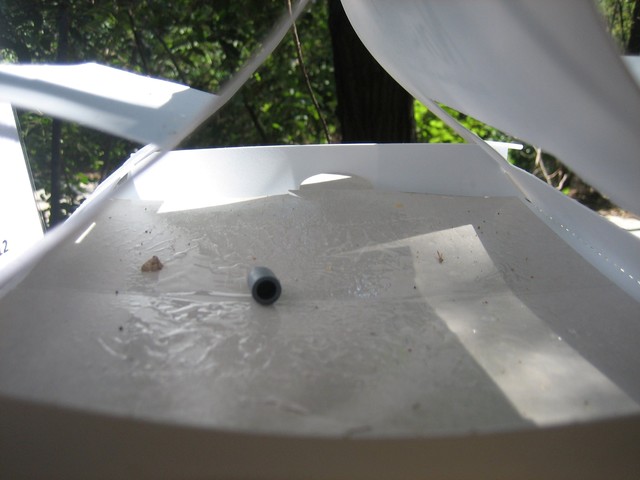
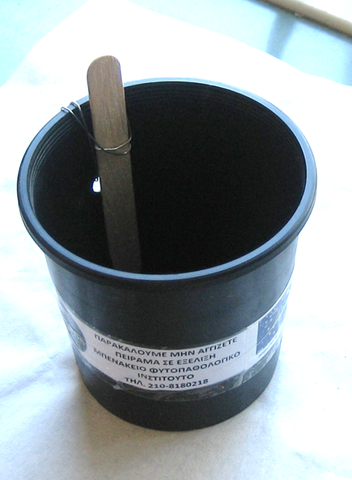
Mapping the current situation
- Sampling from predetermined positions at research stations.
- Inspections – Visual Observations
- Bait traps
- Glue traps
- Traps with attractants
- Light traps
Detection Methods


